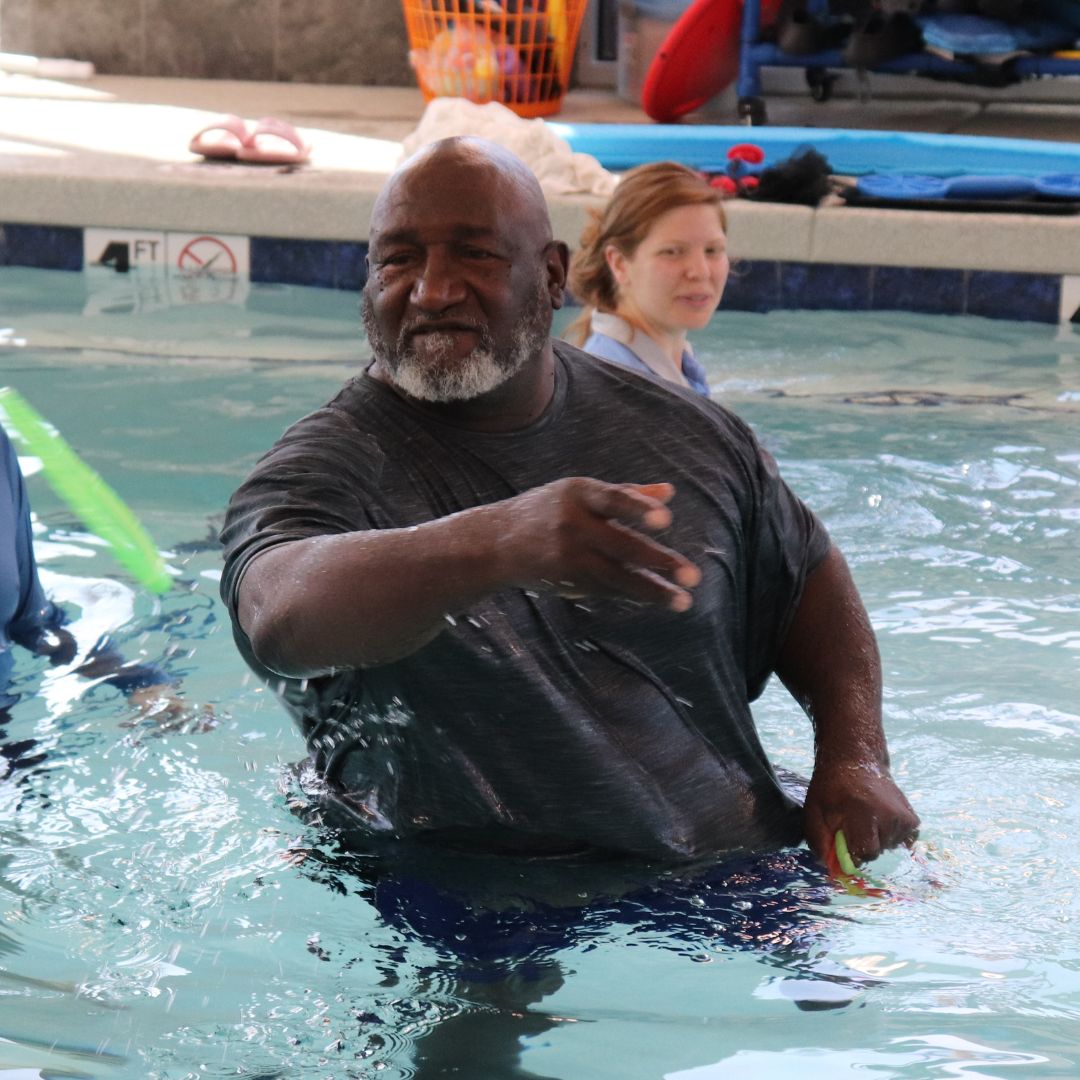Optimizing Aquatic Therapy: The Critical Role of Air and Water Temperature
When clients enter the pool area for aquatic therapy at AzOPT, we often hear “Wow! It is so warm in here.” Even the pool water is warmer than most expect. While local gyms keep their pool areas with ambient air temperatures in the mid 80’s and their pool water at a lower temperature, AzOPT keeps our pool water at 90° F and our air temperature three to four degrees warmer. Let’s explore the importance of air and water temperature in receiving the best therapeutic outcome!
Why is the ambient air kept so warm in aquatic therapy?
Believe it or not, the room air temperature needs to be three to four degrees warmer than the pool water temperature in order to allow for a more therapeutic treatment session. The warm air temperature helps patients maintain flexibility and muscle relaxation while decreasing muscle spasticity. Since our aquatic therapy pool water is kept at 90° F, the ambient air is sustained at 93-94°F.
If the room air was below 90° F, clients would feel much colder exiting the pool due to evaporative cooling. This is one reason individuals seek out water play in the hot summer months when temperatures are over 100° F in Arizona. It’s enjoyable to “cool off” by jumping into a pool on a sweltering hot day. Water “feels” colder than air because water is a more efficient medium than air to cool our body down.
Did you know that for every one degree of temperature change from water to air, it feels 5 degrees cooler to our body?
Why is the pool water temperature maintained at 90° F for aquatic therapy?
Our goal is to keep the pool itself “thermoneutral,” which is defined as a water temp that results in minimal loss or gain of heat when your body is immersed in water and at rest. Typically, the magic thermoneutral number for people is 93° F. Although water temperature can vary based on the condition being treated (i.e. arthritis, cardiopulmonary compromise, obesity, or neuromotor disorders), most therapeutic pools are kept between 90-94° F.
Why does air and water temperature matter in aquatic therapy?
The muscles and tissues of individuals react differently to various temperatures. For instance, individuals with “spasticity” or “high tone” have muscles that are stiffer and react more slowly than typical muscles. These muscles react much quicker when warmed up, especially when surrounded by warm air and water! The higher water temperature helps individuals move better with ease and more flexibility during aquatic therapy. The warmer air temperature helps maintain that muscle relaxation after exiting the pool. The impact is a better therapeutic outcome for all individuals.
Different water temperatures for different conditions
- Individuals with muscle atrophy due to traumatic spinal cord injury benefit from warmer water (above 86° F).
- Those with multiple sclerosis need cooler water temperatures (below 86° F).
- Individuals with a Progressive Neuromotor Disorder, such as Parkinson’s disease should exercise in water temperatures of 90-92 °F.
- Individuals with Multiple Sclerosis do better in cooler 84° F water temperatures.
- Those with cardiopulmonary compromise benefit most from water temperature of 86°-88° F for ideal higher intensity therapeutic treatment.
- Individuals with obesity do better in cooler water temperatures in the range of 80-86°F.
No matter what your health improvement goals are, AzOPT strives to maintain a pool area air and water temperature that is of optimal benefit to their therapy, while providing a welcoming environment ideal for all individuals.
References:
Lenore, M.,Gayle, G. W., & Stevens, S. (2007). Adapted Aquatics Programming a Professional Guide. Total Printing Systems
Hanlon, J., Hines, M. (2007). Aquatic Therapy. In: Physical Therapy of Cerebral Palsy. Springer, New York, NY. https://doi.org/10.1007/978-0-387-38305-7_12
Becker, B.E., & Cole, A.J. (2011) Comprehensive Aquatic Therapy 3ed, Washington State University Publishing.







